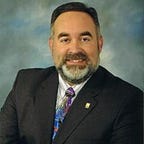A Scanner Darkly
Acquiring a Signature from Dark Matter
“If a tree falls in the middle of the woods and nobody is around to hear it, does it make a sound?” That’s one of those crowd pleasers that usually arrive after the third or fourth round of adult beverages. An even more interesting question, best debated sober, is, “If you hear a tree fall and there are no trees around, what made the sound?” Of course the correct answer is: “An invisible tree.” Illusionists make a good living enabling large objects to disappear, such as jet airplanes and statues of liberty. Rational audience members have no trouble stating, “It’s still there, I just can’t see it.” Astronomers have been using their own invisible tree for over 70 years, albeit under a different moniker: the existence of “dark matter.”
The ability to augment our sense of sight through development of the microscope and the telescope enabled giant leaps in science and our understanding of the nature of reality. These tools provide an opportunity to test our models and theories in both small and large environments. The extremely small realm of quantum physics often exhibits features and behaviors that run counter to our macroscopic Newtonian world. Observations of distant galaxies and clusters of galaxies permit scientists to verify our models of mass, velocity, acceleration, and force on a very large scale. Instruments including the space-based Hubble Space Telescope (HST) and Chandra X-ray Observatory facilitate study of the composition and kinematics of objects too impossibly large to fit into a terrestrial chemistry or physics laboratory.
Analogous to a collection of marbles resting on the floor of a spinning merry-go-round, the giant stars contained within a swirling galaxy must have centripetal forces preventing them from careening off into space. Using calibrated models for the intensity of observed light, astronomers can predict the strength of gravitational forces needed to keep the rotating stars in formation. Surprisingly, the model suggests the galaxies should be more massive than they appear. Instead of overhauling our Newtonian models, astronomers very pragmatically suggested that a majority of the required mass is simply invisible to our light-gathering telescopes. In addition to no reflection or emission of electromagnetic radiation, it is theorized this dark matter possesses other exotic properties including collisionless interaction with normal, visible matter — akin to a ghost walking through walls. Without this property, we would be able to track dark matter from its effect on visible matter.
So, the task at hand is to design an experiment that tests for the existence of dark matter. While making visible matter disappear is the subject of vigorous research into stealth technologies, detecting the already invisible is a nifty little problem. Perhaps our ability to detect dark matter is cloaked by the interfering signal from visible matter. This is a classic problem in analytical chemistry and one that has resulted in the prominence of separations science. One way to find a needle in a haystack is to remove all of the hay. While this glib solution works well for laboratory chromatography and distillation systems, astronomers began the search for a “naturally separated” galaxy cluster to examine.
They found one in the merging cluster 1E0657–56, nicknamed the “Bullet Cluster.” It is actually two clusters of galaxies, gasses and plasma found about four billion light years from Earth that collided around 100 million years ago. Because the stars contained in the galaxies are separated by large distances, they passed by each other undisturbed, in a manner similar to the coordinated dance line choreography of the Rockettes. However, the dense gasses and plasma collided much like a bullet fired through a cloud of smoke and resulted in the cluster’s descriptive epithet. The stars continued on their way while the gasses and plasma were held back by the collisions. Intensity measurements predict most of the visible mass should be found in the trailing gas cloud. According to its theorized collisionless behavior, the dark matter should be found traveling along with the swarm of exposed stars.
The next step in the solution is to measure the total amount of gravity displayed by the cluster through the use of gravitational lensing. Similar to the optical distortions induced by variations in air density on a hot summer day, images of galaxies behind the cluster are slightly distorted as their light passes through regions of strong gravitational fields. The amount of image distortion is quantified by comparing the images to those acquired from galaxies outside the effect of the gravitational lens in the same region of space.
A contour map can be generated that represents the areas of the strongest gravitational fields and, by inference, the highest concentrations of mass. After comparing the gravitational lens data with intensity images captured by the HST and Chandra, it was found the regions of highest mass density for each passing cluster are located in front of the trailing luminous clouds of gas and plasma, thereby providing direct evidence for the existence of dark matter. This discovery was enabled through the use of very sophisticated telescopes in the hands of talented scientists. I find no shortage of poetry in the fact that, like their illusionist counterparts, making the invisible visible requires the use of smoke and mirrors.
This material originally appeared as a Contributed Editorial in Scientific Computing 24:4 March 2007, pg. 13.
William L. Weaver is an Associate Professor in the Department of Integrated Science, Business, and Technology at La Salle University in Philadelphia, PA USA. He holds a B.S. Degree with Double Majors in Chemistry and Physics and earned his Ph.D. in Analytical Chemistry with expertise in Ultrafast LASER Spectroscopy. He teaches, writes, and speaks on the application of Systems Thinking to the development of New Products and Innovation.
